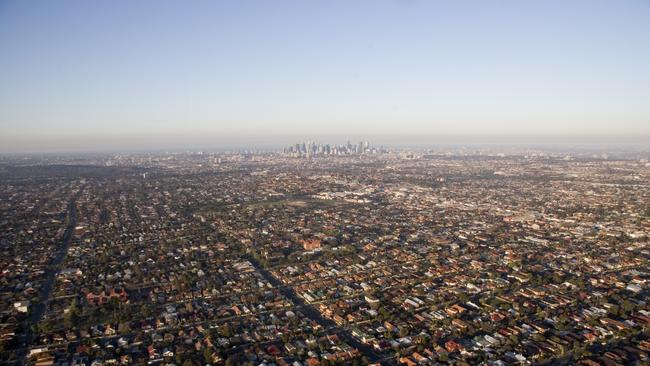Regions will be the winners after the coronavirus lockdown
When this pandemic is over, Australians may wake up to the fact that COVID-19 has wiped out all the barriers to a long-held lifestyle dream.

Before COVID-19, one of Australia’s biggest demographic challenges was to channel population growth from the big cities to the regions. Our population is extremely concentrated. There is no other nation (except city-states and micronations) where two-thirds of the population lives in only five cities. In Melbourne and Sydney, people wish population growth to slow down so infrastructure and housing supply can catch up. Regional towns want to grow, or at least maintain their population base, but struggle to do so.
Let’s explore the future of regional Australia in the post-coronavirus world. For the next year or two, Australia will minimise its migration intake to slow the virus and to avoid a second outbreak. Because of our high future unemployment rate we won’t need to import too many skilled migrants. The few remaining new migrants mostly will move to our largest job clusters, meaning regional Australia will miss out. There is a vague hope the regional visa scheme will channel some migrants away from the capital cities but it remains to be seen if this succeeds.
READ MORE: The best country towns in Australia
Granted, the migration outlook doesn’t look favourable but there are four developments suggesting the regions will emerge (after many dark months) stronger than before.
First, the natural strengths of regional Australia will be in demand post-COVID-19. We found ourselves vulnerable because we rely on China for our supply of ventilators, hand sanitisers and face masks. The regional manufacturing sector really stepped up its game in our time of need.
Australia’s only manufacturer of face masks, Med-Con, is based in Lemnos near Shepparton in Victoria. The small company heroically put its humble operations into hyperdrive. Med-Con now operates 24/7 with three eight-hour shifts a day producing at a rate of 30 million masks a year.
COVID-19 will strengthen the local manufacturing sector as Australia tries to become more self-reliant. The regions provide cheaper industrial land and more affordable accommodation for workers. The coming resurgence of manufacturing is a rare opportunity to bring new jobs at scale to regional Australia.
Our local agriculture sector easily produces enough food for all 25 million residents. Since agriculture is highly mechanised and farms have been aggregated, the number of ag-jobs that can be added to the regions is relatively low. The agriculture sector, and therefore regional towns, will see further investment in the future — both from Australia and from abroad as governments and individuals consider stockpiling policies.
Second, the easiest way for governments to kickstart dormant economies is infrastructure spending. Such programs around the world will ensure that our mining products stay in high demand.
Further, I expect such an infrastructure building program to be announced in Australia once the COVID-19 lockdown is over. Any large-scale infrastructure package is likely to include rail upgrades linking the capital cities and their satellites. Connectivity is key for the success of regional towns, and the post-coronavirus future promises the right kind of investments.
Third, it doesn’t matter that dense metropolises such as Singapore and Seoul have managed COVID-19 very well because the Australian people will likely be very suspicious of dense living arrangements and gravitate towards lower density. This works in favour of regional cities, especially satellite cities in the orbit of the large capitals. The small shoebox apartments in the inner city will be viewed unfavourably. This trend will be intensified by the large millennial cohort entering the family formation stage, seeking houses large enough to rear kids. It’s the outer suburbs and regional cities where such housing is available and affordable.
Fourth, the working-from-home boom is here to stay. Once granted, a privilege is hard to take away from people. Many will want to continue to do so. This enables the WFH cohort to look for housing outside of the inner suburbs in pursuit of a separate study, a humble room with a door that keeps kids out of video calls. This means larger houses will be in demand, and because such houses are unaffordable in the inner city, many will consider selling up and moving to a regional city.
Business also will learn to love WFH. With more staff working away from the office, businesses can rent smaller offices in expensive towers — a much-needed cost-cutting opportunity for many cash-strapped firms.
While regional towns will be hit hard this year, plenty of opportunities are emerging. It’s up to the regional mayors and local government areas to ensure they position themselves to get the full benefit. They will want to escalate their lobbying for improved connectivity, and work closely with property players to ensure that enough land and affordable housing products are available.
Local authorities especially will want to rework their messaging and strategic planning to ensure they are ready to grasp the opportunities of a radically changed Australia.
Simon Kuestenmacher is director of research at The Demographics Group.




To join the conversation, please log in. Don't have an account? Register
Join the conversation, you are commenting as Logout